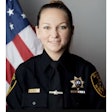
Too many LEOs are dying beside the road because they were accidentally struck by a passing vehicle. According to the Officer Down Memorial Page (www.ODMP.org), there were four “struck by” duty deaths in 2017. There were 10 such tragedies in 2016. So far in 2018, the news is grim.
Lt. Christopher Robateau was struck and killed by a vehicle while checking on the welfare of another driver who had been involved in an accident.
Agent Joel Pantojas-Fuente was struck and killed by a vehicle while assisting a disabled motorist.
Correctional Officer Tawanna Marin was struck and killed by a vehicle while supervising an inmate work crew.
Police Officer Mathew Mazany was struck and killed by a hit-and-run driver while assisting another officer during a traffic stop.
This list does not include the unknown number of officers who were hit by a passing vehicle and suffered non-fatal—but potentially career-ending—injuries.
This matter requires the attention of law enforcement personnel—from patrol to admin—as well as the civilian drivers who are cutting it too close when passing emergency vehicles on the roadways.
The Drivers
Most states have so-called “move over” laws requiring motorists to slow down and move to the lane farthest from the flashing lights.
The trouble is, many people don’t even know what their state’s move over law is—or that there even is one. That problem can be solved at https://exchange.aaa.com/, but few people are intellectually curious enough to actively search for this kind of information. Further, I would posit that most drivers see those signs posted beside the freeway and promptly ignore them.
Another matter is that the law is very rarely enforced. Officers are addressing the matter at hand beside the road, and are unlikely to abandon what they’re doing, hop into their squad, get into a pursuit, and issue a citation to the offending driver.
It’s occurred to me that a roadside “sting operation” like this one from Germany (www.policemag.com/germansting) might work but something tells me that such a tactic would be wildly unpopular with American motorists, and ultimately exacerbate the problem.
Probably a better strategy would be to educate the public. At a minimum, police agencies can record a short PSA explaining the law, and demonstrating what drivers are required to do.
- Send the video to your local news station.
- Post it to your department Facebook page.
- Lather, rinse, repeat.
The Officers
Many “struck by” incidents take place at night, or in inclement weather, or in low-visibility conditions, or some combination of the three.
This is why it is imperative at every roadside incident—including traffic stops—that officers always don their reflective vests.
We’ve all heard the argument that a bright neon yellow vest becomes tactically unsound in the event a gunfight breaks out. I’ll concede that there probably is something to that, but counter with the argument that you can use your tactics and training to find cover/concealment and stop the deadly threat with your superior gunfighting skills. In contrast, you cannot outsmart two tons of steel and aluminum hurtling at you at 60+ miles per hour.
I have no idea whether or not any (or all) of those abovementioned LEOs who perished in a “struck by” incident this year were wearing a reflective vest. Perhaps they were.
I have not taken a formal, scientific survey, but from anecdotal, experiential knowledge, I would estimate that of the thousands of times I’ve passed a police officer at a roadside incident, I could count on one hand the number of times I’ve smiled at seeing that ugly reflective vest.
As I slow down and move over, I'm disappointed to see dark blue instead of neon yellow.
A policy change needs to happen—astonishingly, some agencies do not require the use of reflective vests.
I don’t care if it’s not “tacticool” to look like a school crossing guard.
Those school crossing guards are rarely run over.
Let’s learn from them.
Wear your vests. Both of them.
Doug Wyllie is contributing Web editor to POLICE.












